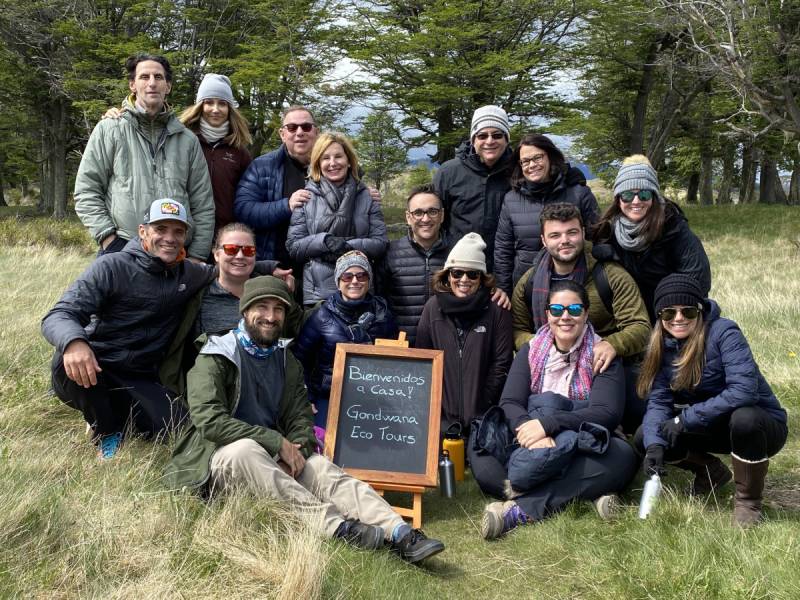Discovering the Wildlife and Vegetation of Tanzania
Download Travel Details >PRIVATE & SMALL GROUP TOURS TO THE WORLD'S BEST DESTINATIONS
Join Us For A Safari In Tanzania

The Amazing Biodiversity of Tanzania
Located in East Africa, Tanzania is one of the most biodiverse countries on the continent. From the depths of Lake Tanganyika to the summit of Mount Kilimanjaro, the wildlife and vegetation of Tanzania are truly unique. Come along with us as we take a tour of tropical plants in Tanzania and discover the mysterious mammals that call this incredible country home.
The Big 5 and Other Tanzanian Wildlife
The biodiversity of Tanzania far outstrips that of other African nations. The country is home to 6 of 25 globally known biodiversity hotspots, including the forests of the Eastern Arc Mountain Range, the country’s coastal forests, and the grassland savannas, where many large mammals are located. More than 20 percent of Africa’s large mammals can be found in Tanzania, including the Big 5.
Don’t be fooled – the term “The Big 5” doesn’t refer to the animals’ size. Instead, it refers to the five animals that are considered the most dangerous to hunt: lion, leopard, rhinoceros, elephant, and African buffalo. In the past, these five animals were considered trophies by hunters. Today, however, the animals are protected, and safari-goers from around the world use the term to refer to the most popular animals they see on safari.
Here's the inside scoop on the Big 5 for safari-goers:
African Lion
Africa’s largest, apex predator is the African Lion, or “the king of the jungle.” There are about 20,000 lions in Tanzania – the highest density on the continent. These big cats live in a group known as a pride, which generally includes up to 15 lions and lionesses. The lionesses hunt and care for the pride’s cubs, while male lions stay behind as the pride’s guardians.
Pro tip: You can find African lions at Serengeti National Park, Ngorongoro Conservation Area, Lake Manyara National Park, Ruaha National Park, and Nyerere National Park. These parks also offer visitors the chance to explore the flora of East Africa on game drives.
Leopard
The leopard is the most elusive of the big cats and is known for its amazing climbing skills. This comes in handy when they are hunting, allowing them to stalk their prey from the tops of trees and pounce down on them in surprise attacks. Leopards are solitary animals that prefer to hunt at night, but you can spot them on the prowl if you book a night safari.
Did you know? There are nine leopard subspecies, each of which can be identified by the different patterns on their fur.
Pro tip: To see leopards, plan game drives in Serengeti National Park, Ruaha National Park, and Ngorongoro Conservation Area. Daytime drives are good for discovering Tanzania native plants, while nighttime drives are best for big cat spotting!
African Elephant
Unlike the big cats of Tanzania, African Elephants are herbivores, grazing their way across the plains of Tanzania. Because these massive mammals are primarily found on the grasslands of the Serengeti, an elephant safari is not a good place to discover the flora of East Africa. Instead, you’ll have ample time to concentrate on the country’s megafauna!
Pro tip: The best places to see an African elephant in Tanzania are Tarangire National Park, Serengeti National Park, Ruaha National Park, and Ngorongoro Conservation Area.
African Rhinoceros
There are two types of rhinoceroses in Africa – the white rhinoceros and the black rhinoceros. Rhinos are prone to extinction because they are hunted by poachers for their horns. These large mammals are herbivores and depend on Tanzania native plants for sustenance.
Did you know? Black rhinoceroses have pointy upper lips, while white rhinoceroses have square lips. Black Rhinoceroses also have horns that are similar in size, while the front horn of white rhinoceroses is much longer than their back horn.
Pro tip: African rhinos can be found in Serengeti National Park, Ngorongoro Conservation Area, and Mkomazi National Park.
African Buffalo
Although they may seem docile, the African buffalo will attack if it perceives a threat. These mammals are herbivores and will eat almost the equivalent of their body weight in tropical plants in Tanzania each day.
Pro tip: If you want to see an African buffalo on safari, you can find them in Serengeti National Park and the Ngorongoro Conservation Area.
Tanzania Native Plants: A Primer
The flora of East Africa is legendary, but the tropical plants in Tanzania are out of this world! Because of its sheer size and location, the wildlife and vegetation in Tanzania are both big attractions for tourists. You’ve already gotten a sneak peek of the biodiversity of Tanzania’s mammals, but now we’re offering a guide to Tanzania native plants that you should look out for during your safari.
|
Flower |
Characteristics |
|
Bougainvillea (Bougainvillea spectabilis) |
This beautiful pink flower originated in South Africa. Today, it is grown for export in East Africa, specifically in Tanzania. These plants flower from summer to autumn and are usually planted in the spring, and are very beloved by gardeners because of their versatility. |
|
Jacaranda (Jacaranda Mimosifolia) |
This subtropical tree is disease-resistant and features gorgeous violet flowers. Although it looks like any other African tree before it blooms, its bright flowers make it a stand-out among Tanzania native plants. |
|
Golden Dewdrops (Duranta Erecta) |
This ornamental shrub is one of the most common tropical plants in Tanzania. It can be found in most subtropical gardens, where its pale blue flowers and thick leaves are standout features. It grows so easily that it is considered a weed in many parts of the world! |
|
Frangipani (Plumeria) |
Among the flora of East Africa, frangipani is one of the most beloved flowers of all. There are many variations of this flower, but the type grown in Tanzania is most often pink or white. |
|
Impatiens (Impatiens Walleriana) |
This flower originated in Tanzania and is a Tanzania native plant. Impatiens come in white, bright red, orange, and pink, and will flower from the end of spring up to mid-autumn. |
Does Tanzania Have a National Flower?
You may think the incredible biodiversity of Tanzania means there are too many endemic flower species to name one as the national flower, but you’re wrong! Tanzania does have a national flower, and it’s the clove. Syzgium Aromanticum, more commonly known in English as “clove,” can be found scattered across the country. This plant, known as mikarafuu in Swahili, is easily recognizable by its slender stalk, thin, green leaves, and red flowers with bulb-like petals.
Exploring the Wildlife and Vegetation of Tanzania through Safari
The wildlife and vegetation of Tanzania sprawl across a vast area that stretches from the coastal plains of the Indian Ocean through the Serengeti plains and up the towering peaks of Mount Kilimanjaro. The country’s diverse topography, which includes mountains, lakes, savannahs, and rainforests, creates a variety of habitats that support an abundance of Tanzania native plants, as well as an incredible array of mammals, reptiles, birds, and aquatic life. If you want to discover this treasure trove of biodiversity for yourself, consider booking a small group tour with Gondwana Ecotours today. Discover the flora and fauna of East Africa, one game drive at a time.

